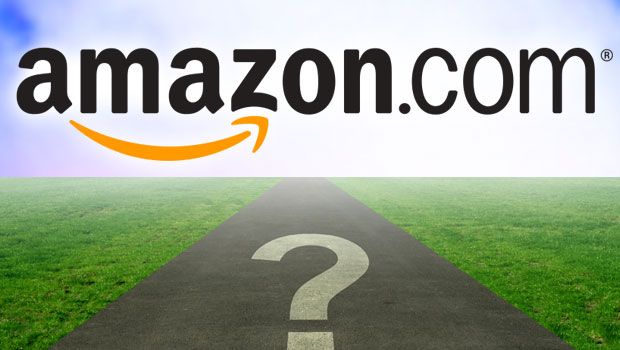Amazon has been reworking relationships with several of its long-time wholesale suppliers in a bid to cut costs, Bloomberg reported Tuesday. The plan is to buy from larger companies instead of smaller businesses.
Thousands of small suppliers that sell less than US$10 million annually on Amazon’s platform would lose bulk orders, while big brands like Procter & Gamble and Lego would benefit.
“Small suppliers that cannot comply with Amazon’s requirements will end up having a tougher time working with it,” commented Ray Wang, principal analyst at Constellation Research.
The company is “entering a period of rationalization and efficiency,” he told the E-Commerce Times. “It will target any area where you see massive commoditization.”
Large wholesale suppliers are not necessarily safe from the ax, however.
Amazon “will always focus on improving efficiency, and those partners that aren’t cost effective, regardless of size, will always be at risk,” observed Rob Enderle, principal analyst at the Enderle Group.
Amazon told Bloomberg speculation about a large scale reduction of vendors was “incorrect.”
How Amazon Could Benefit
If Amazon actually shifts away from smaller wholesale suppliers, those companies would be able to sell more items directly to consumers.
Other possible results of such a change:
- Reduction in the number of staff Amazon would need to manage vendor relationships, and to forecast and manage bulk orders;
- Streamlined inventory processes;
- An increase in Amazon’s commissions from direct sales the affected suppliers would make on its site;
- Charges for services such as packing and delivery; and
- An increase in the share of revenue Amazon’s marketplace would contribute to its bottom line. Currently, the marketplace gets 58 percent of Amazon’s e-commerce sales, Jeff Bezos said in his 2018 letter to shareholders last month.
The move probably will increase consumer satisfaction, Enderle told the E-Commerce Times, because “the small suppliers are often problematic.”
Problems include unauthorized selling of brand products to Amazon, shipment of counterfeit products, and sabotage against competitors through a variety of dirty tricks — all issues Amazon has invested considerable time and money to address.
Also, the move will help Amazon manage its cash flow better, according to Dillon Carter, head of growth at Amazon wholesaler Vendrive CRM, which offers a CRM package for wholesalers on Amazon.
It “frees capital for Amazon to be more strategic, allowing for further increases in third-party sales, which brings more product offerings to the marketplace without Amazon’s own capital being a bottleneck,” he told the E-Commerce Times.
Opening up to increased third-party sales lets Amazon “shift focus to the demand side of the marketplace, while third-party sellers and smaller brands handle the supply side,” Carter said. “Managing the level of inventory that Amazon does requires a large amount of capital and logistics.”
It might be possible that the smaller suppliers could flee to eBay, which remains focused on small suppliers, Enderle suggested, but “I doubt it will shift a critical mass of customers to eBay.”
A Crackdown Foretold
Amazon’s suppliers had plenty of warning that a crackdown may have been imminent.
The company briefly stopped sending purchase orders to suppliers with less than $10 million in annual sales in March, and reset inventory to zero for some brands using the direct fulfillment model.
Thousands of small vendors reportedly were affected by the move.
Amazon urged small suppliers to sign up for Brand Registry within 60 days if they wanted to continue getting access to automatic purchase order fulfillment.
Brand Registry is a program that gives brand owners with registered trademarks access to various tools to strengthen their presence on Amazon, including the Project Zero initiative to fight counterfeiters.
There was speculation at the time that it was the first step in Amazon merging its Vendor Central and Seller Central marketplaces to create One Vendor, a consolidated selling experience for merchants.
“Amazon is seeking full control of its supply chain on its terms,” Constellation’s Wang observed.
With the push in March, Amazon “likely saw an increase in customer satisfaction and a reduction in costs while increasing profit,” Enderle suggested. “That may have laid the foundation for their thinking on this move.”
Taking Over the Market
Google has lost ground to Amazon for product search, especially for consumer packaged goods, Jumpshot has found.
YouTube influencers have been driving steady engagement and conversions on Amazon, with the leading 1,000 influencer channels on YouTube driving 84 million product views and 2.2 million purchases. The leading 10 influencer channels accounted for 21 percent of purchases on Amazon.
The Impact on Consumers
Trimming off the smaller wholesale suppliers and pushing them to direct retailing “would positively impact consumers as competition continues to rise among third-party sellers,” Vendrive’s Carter said.
“With many brands also shifting more heavily into MAP (minimum advertised price)-enforced agreements, this also potentially creates more pricing stability for consumers, as brands have more control of the pricing of their products on sites like Amazon,” he noted.
That may not necessarily be the case, suggested Constellation’s Wang. “Over time, prices will go up, with less choices and less options for suppliers to sell to.”























































Social Media
See all Social Media